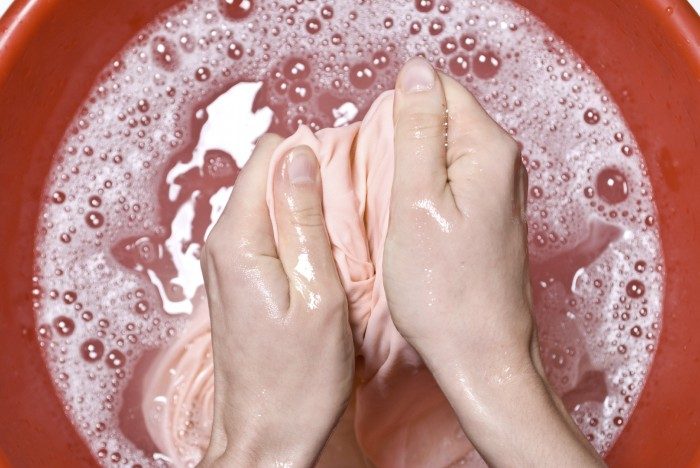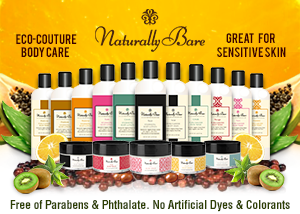Green Your Stain Removers

If you’re like me, you never think about stain removal until a crisis is at hand—red wine on your favorite tablecloth; crayon markings on the wall; blood on the upholstery, lipstick on your collar. Commercial stain removers may work well, but they’re full of harsh synthetic chemicals that have no place in the healthy home. Before reverting to the big guns, try removing stains with plant-based ingredients you probably already have in your cupboard.
The secret to stain removal isn’t all in what you use, however. How you use it matters. Here are some hot tips:
Don’t wait. Treat stains when they’re fresh. A set stain may never come out.
Blot, never rub. Rubbing simply spreads the stain around.
Heat sets many protein-based stains, making them impossible to remove.
Inspect any stain-treated garment before putting it in the dryer. If the stain is still visible after one wash cycle, retreat and re-launder it.
Be patient. It can take a while for a stain to respond to treatment.
Old-Fashioned (and Green) Stain Treatment Recipes
Berries/Fruit Juice
Fabric: Pour boiling water directly over the stain. Or treat the stain immediately with fresh lemon juice. If the stain has already set, try blotting with glycerin and letting it sit for 30 minutes, then rinse the fabric clean with warm water and allow to air dry. Launder as usual. (Glycerin is a product of extracted vegetable oils available in grocery stores and at places like Walmart and Walgreens stores).
Upholstery and Carpet: Wipe up any excess residue. Blot with mild laundry detergent and warm water. Rinse the spot with a one-to-one mixture of distilled white vinegar and water (do not soak the spot), blot again with mild detergent and water, then sponge clean with cold water.
Dried Blood
Soak freshly stained garments in a mixture of salt (about a handful) and cold water for 30 minutes. If the stain has set, try covering it with a paste of unseasoned meat tenderizer and warm water. Leave it for 15 to 20 minutes; rinse with cold water. Launder as usual.
Upholstery and Carpet: Blot a fresh stain continuously with cold water until it disappears. Treat dried stains with a small amount of glycerin. Let stand for 30 minutes; then blot with water.
Crayons
Crayons are not water-soluble; you’ll probably need to use some sort of solvent. Crayola™ recommends WD-40, though it’s not a green product. Heat from a blow dryer can help. Scrape off excess crayon with a dull knife, then apply a small amount of rubbing alcohol to the stain and blot. Rinse, apply a small amount of liquid dish soap to the stain and then blot with a damp towel. Launder as usual.
On Walls: Try heating the marks with a blow dryer then wiping off the loosened crayon. Rubbing with a baking soda and water paste works, as well, and is gentle enough to use on most wall coverings and paint.
Grass
Do not use ammonia or degreasers—they can make stains permanent. Blot with a little rubbing alcohol, then rinse with water. Apply liquid dish soap to the stain, rinse with water, and allow the garment to air dry. Launder as usual. If discoloration remains, soak the garment in warm water for 30 to 60 minutes. Re-launder in hot water.
Lipstick
Lipstick can leave a difficult, oily stain; professional treatment may be necessary.
Upholstery and Carpet: Wipe away any excess lipstick. Wet the stain with a small amount of rubbing alcohol. Blot with a white towel until no stain is transferred to the towel. Treat with a carpet cleaner or spot remover if a blemish remains.
Red Wine
Pour salt on a red wine stain in carpet. Leave it on overnight before vacuuming it up.
Removing Spots from Stainless Flatware
Rub olive oil onto flatware with a soft cloth and then wipe off with a soft cloth dampened with white vinegar.



March 12th, 2014 at 6:47 pm
Removing stains from you carpet can be a major pain. In many cases you are not able to remove the stain fully and the discoloration remains after you have tried cleaning. Reasons like this are why hiring a professional carpet cleaning company is a good investment. They are able to fully remove the dirt and stains in your carpet.
March 13th, 2014 at 1:16 pm
Thanks for joining the conversation, Caleb…great thoughts.
March 14th, 2014 at 12:05 am
So true. Thanks for your clarification. I have what few carpets I have professionally cleaned at least once a year. I make certain the company uses steam only, no chemicals. Works every time.
May 6th, 2014 at 5:35 pm
[…] Published in Greencleaningmagazine.com […]